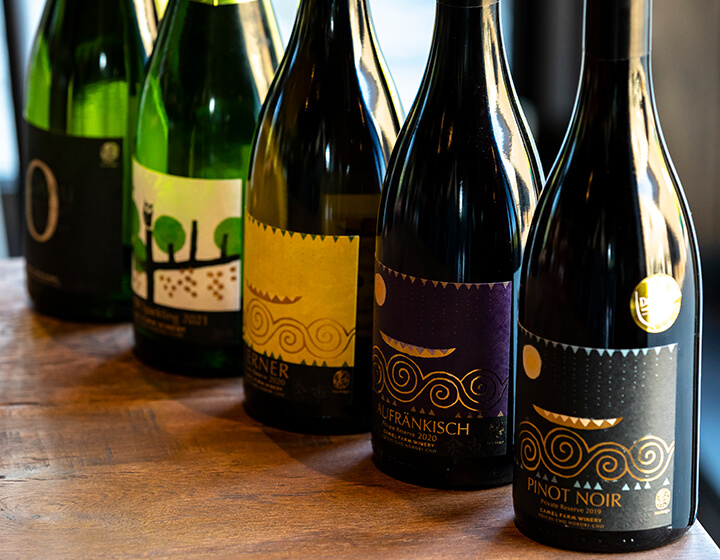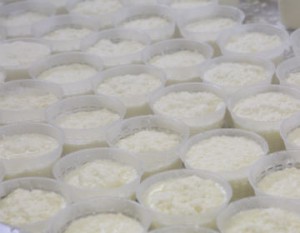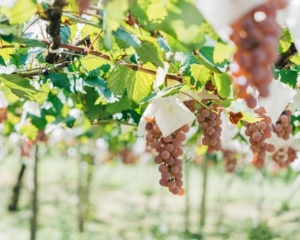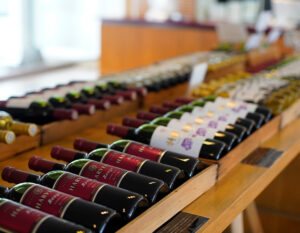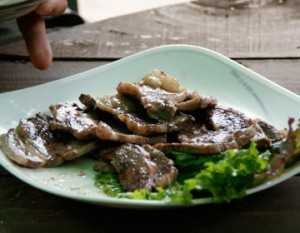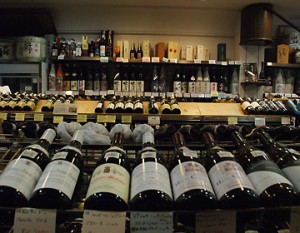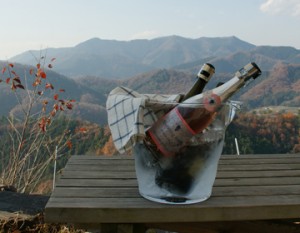One and Only in YOICHI”. These words on the official website express everything about Camel Farm Winery, which continues to produce one and only wines with its sights set on the world. We interviewed the winery about its history from its founding to the present and its future wine production.
The one and only wine produced in Yoichi: “We can aim for the world in this place.
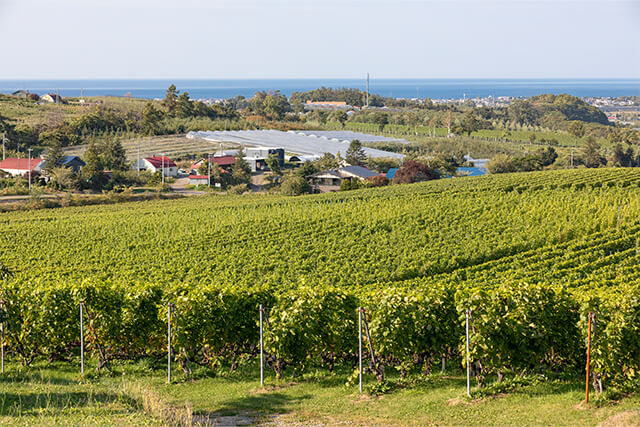
Yoichi is located at the base of the Shakotan Peninsula in western Hokkaido. The town has long been active in the cultivation of fruit trees, taking advantage of its mild climate, temperature differences between day and night, minerals from the ocean, and well-drained soil. Camel Farm Winery, established in 2014, is one such winery. With approximately 13 hectares of vineyards and a 1,400-square-meter winery, the winery is engaged in wine production using the terroir of Yoichi and traditional Italian methods.
A vineyard in Yoichi that a famous Italian winemaker fell in love with at first sight
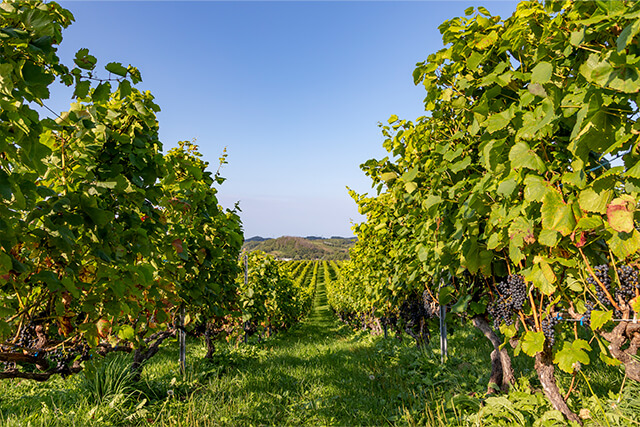
Camel Farm Winery was established in 2014 as an agricultural corporation of the Camel Coffee Group with the hope of bringing Japan’s natural bounty to the world and revitalizing the region. The winery’s establishment was inspired by an encounter with Italian brewer Riccardo Cotarella.
Mr. Cotarella is a world-renowned brewer who has served as president of the Italian Oenologist Association and the International Enologue Federation.
Camel Coffee Group brings foods and food culture from all over the world to Japanese tables, and we met Riccardo Cotarella through the “San Patrignano” project in Italy, which Camel Coffee Group supports through the sale of its wines.
If wines made in Japan’s climate become known to the world, it would be a way of communicating Japan’s wonderful nature and agriculture to the rest of the world. With the cooperation of Mr. Cotarella, who shared this belief, they started their winemaking activities.
So, where do they actually make wine? In their search for the ideal winemaking environment, they found it in the town of Yoichi in Hokkaido.
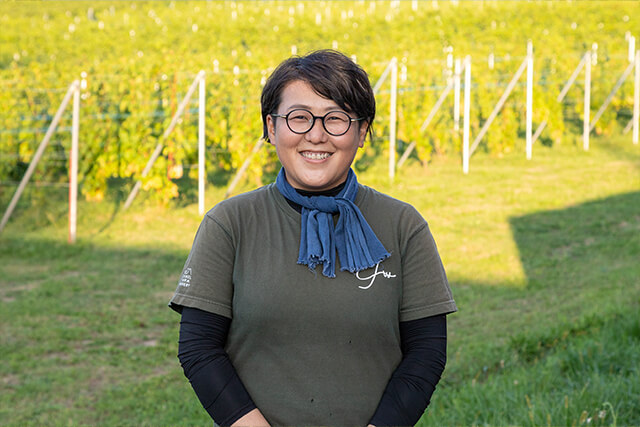
We came across a story that Takeshi Fujimoto, who at the time was a pioneer in wine grape production in Yoichi Town, was considering the future of his 11-hectare vineyard. From the perspective of an experienced winemaker like Mr. Fujimoto, it was a very attractive vineyard.”
Ai Ito, who has served as winery manager since 2014, is one of those who received direct instruction on wine grape production from Mr. Fujimoto. Fujimoto-san’s vineyard, which has been in existence for 40 years, is so large and so carefully managed; at 11 hectares, it is more than the size of two Tokyo Domes. The winds from the sea and the mountains blow through here, so it is resistant to disease, and I think Mr. Cotarella immediately recognized at first glance that this is a blessed land for winemaking.
Learning from Mr. Fujimoto about grape cultivation that makes the most of Yoichi’s climate and from Mr. Cotarella about traditional Italian wine-making methods and the latest technology, Camel Farm Winery’s completely new winemaking process has begun.
Efforts to Deliver the Ideas of the “Producer” of Wine to the “Drinker
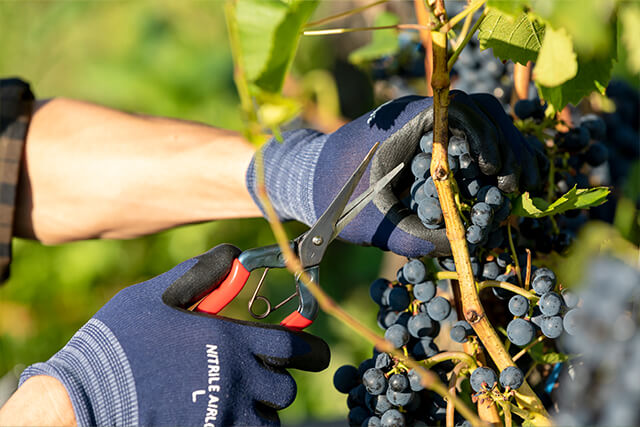
There are currently 10 varieties grown, including Kerner, Bacchus, Chardonnay, Zweigelt, and Pinot Noir. Over the past three years, they have taken over Mr. Fujimoto’s conventional farming methods (a general cultivation method that uses legally approved pesticides and fertilizers within the limits of the standards) and gradually shifted to less pesticide use while expanding their vineyards. He then expanded the fields and gradually shifted to a less pesticide-intensive cultivation method. It is very difficult with a field of this size, but we want to grow as close to nature as possible, using as little pesticides, herbicides, and chemical fertilizers as possible,” says Ito.
Seven staff members manage the cultivation at all times, and during the harvest season, the staff of the Camel Coffee Group gathers in Yoichi. Each bunch is harvested by hand.
We believe that having Kaldi Coffee Farm and group staff involved in the winemaking process will not only help them acquire product knowledge, but will also give them a chance to understand how difficult it is to harvest grapes by hand, and through this hands-on experience, learn about the thoughts and feelings of the producers, which they hope to convey to their customers as well. We believe that this will be an opportunity for us to share our thoughts and feelings with our customers. (Mr. Ito)
Aiming for the world with the latest equipment and superior brewing technology

For three years after taking over the vineyard in 2014, the winery focused on viticulture, and the harvested grapes were used for wine production on consignment.
Finally, in 2017, a state-of-the-art winery was completed. The winemaking team is led by Angelo Totaro, a disciple of Mr. Cotarella.
Totaro is a top-class oenologist who has worked in Champagne and Emilia Romagna.
More than half of the wine produced here today is sparkling wine. There are 45 state-of-the-art stainless steel tanks with temperature control, including six Charmat tanks. The maximum production capacity is 150,000 bottles.
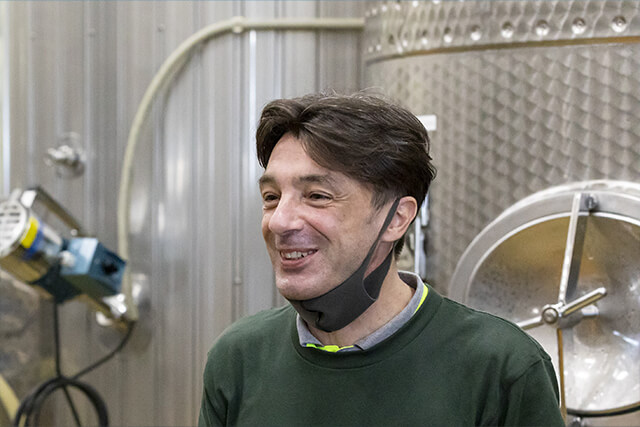
Located at 43 degrees north latitude, Yoichi is in Region 1 of the “Amerin & Winkler Climate Chart” (the climate classification of wine-growing regions by Maynard Amerin and Adam Winkler), the same as the Champagne region in France. When we first saw this vineyard, we all decided, ‘Let’s go global with sparkling wine! We decided to go global with our sparkling wine,” says Totaro.
Region” refers to the classification of grapes based on the total temperature from April to October during the growing season. Region 1 is the coldest and Region 5 is the warmest. Total temperature is the total temperature required for grape ripening, and is used as a guide for the best time to harvest the grapes.
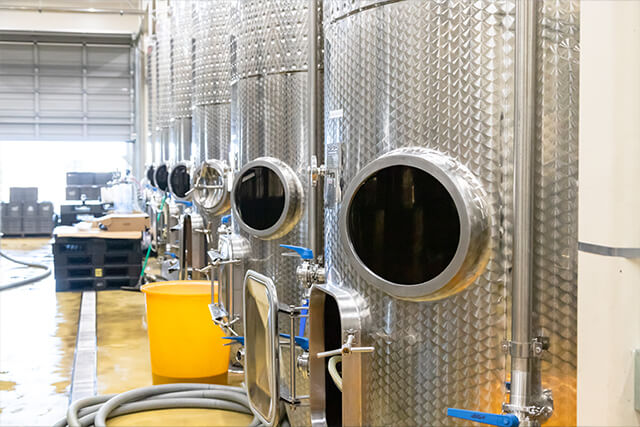
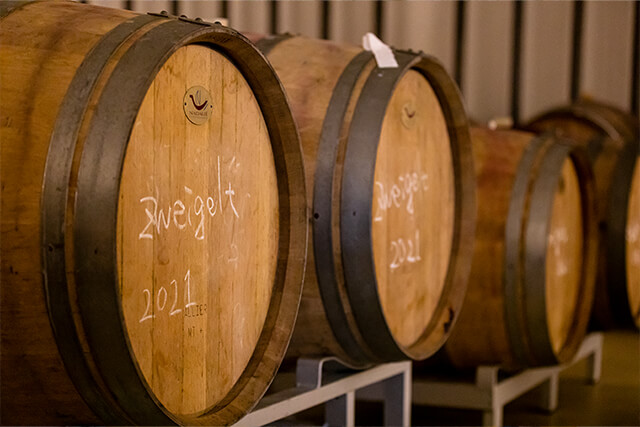
Sparkling wine is produced using either the Champagne method, in which still wine (wine that has not been sparkled) is bottled and fermented in the bottle, or the Charmat method, in which wine is fermented in Charmat tanks. The Charmat method involves fermentation in a tank for a short period of time without exposing the wine to air, resulting in a light and fresh finish. The Champagne method, on the other hand, involves a second fermentation in the bottle one by one and a long aging process, resulting in a honey-like, full-bodied finish.
The sugar content, acidity, pH, etc. of the grapes are meticulously measured. The data is shared with Mr. Cotarella in Italy, and the timing of harvest and the brewing process are discussed with him.
Mr. Tortaro’s wealth of experience and knowledge is also demonstrated in the barrel aging process.
Even if the plots are planted only 2 meters apart, the harvested grapes will taste and smell different. It is due to small differences in sunlight, wind direction, soil composition, and other factors, but when each plot is prepared in different barrels, the same grape variety tastes completely different. This is the interesting part of winemaking. New barrels are used when we want to give a strong aroma, and old barrels are used when we don’t want to give so much aroma.
Mozart’s music echoes quietly in the cellar. This is called “musical aging,” which is also used in Italian wineries. It has been scientifically proven that sound vibration has a positive effect on aging.
Winning a gold medal at an international wine contest was a big step forward.
In 2021, the wines produced in this way became known around the world. Pinot Noir Private Reserve 2019 won first place at the Decanter World Wine Awards, an international wine competition sponsored by the British wine magazine Decanter. It was the only Japanese Pinot Noir to win this award. In 2022, “Blaufränkisch Private Reserve 2020” won first place and was also named BEST WINE OF THE YEAR by the top judges.
Blaufränkisch is Austria’s representative grape variety in Europe, but we, a Japanese winery, were chosen instead of an Austrian winery,” said a delighted Mr. Totaro, when we asked him about his future wine-making goals.
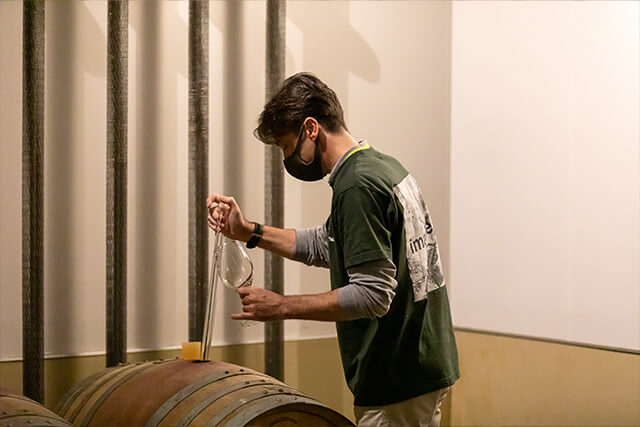
Our goal is to make good wine that can only be made in Yoichi. The oldest vines in the vineyard are 40 years old, and we want to produce a flavor that speaks of the long history of these 40 years. Many people in Japan say that they want to make wines that are like somewhere else in the world, but it is important to pursue wines that can only be made in this place. It is better to buy wine from Italy than to aim for Italian wine. We want to make our own wine, not a copy.”
What kind of unique wine will be produced here in Yoichi next? The challenge of Camel Farm Winery will continue in the future.



